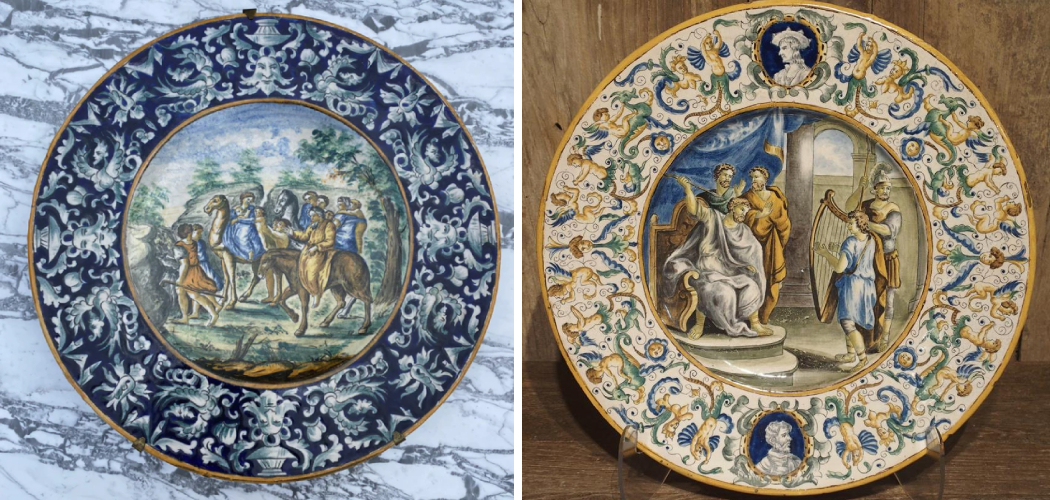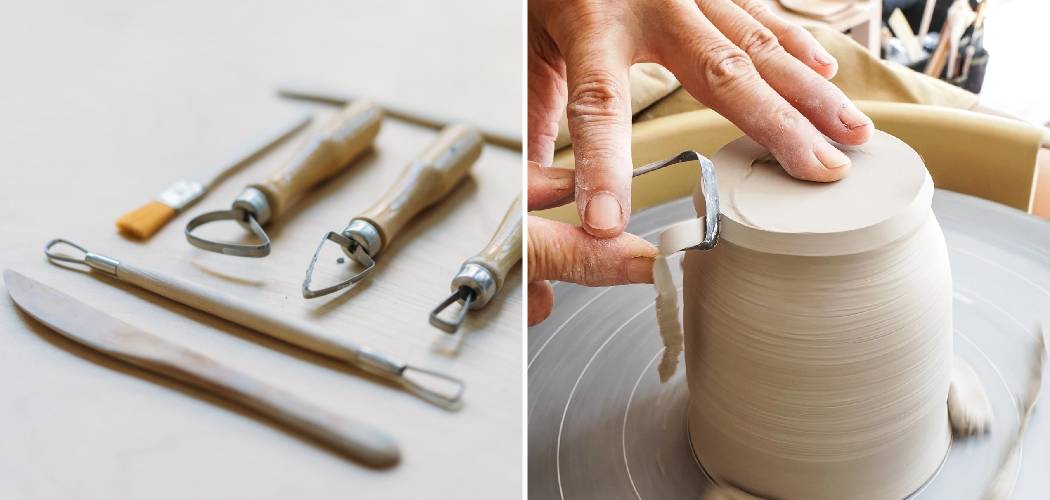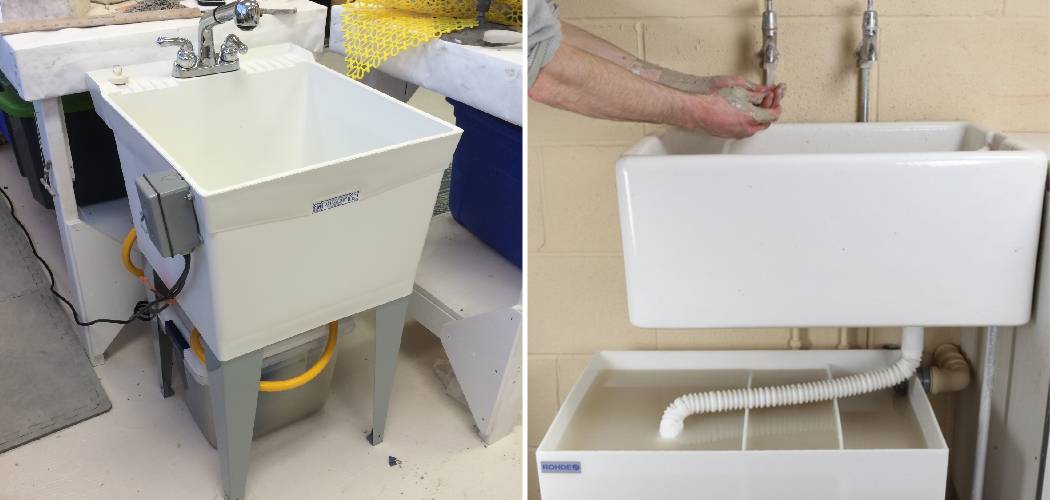Have you ever been shopping at a flea market or antique store and come across beautiful pottery that looks like it’s from another era? Or perhaps you already have a few pieces of what could be Roseville Pottery stowed away in the back of your cupboard. In either case, if you’re interested in learning how to identify Roseville pottery from imitations, keep reading!

In this blog post, we’ll cover key details to look for when identifying original Roseville Pottery pieces. From distinct glazes and techniques used by its craftsmen to recognizing popular patterns and limited edition series, we’ve got everything you need to know about this famous ceramics brand.
Table of Contents
Is Roseville Pottery Valuable?
Roseville Pottery is highly sought after and can be quite valuable. It was one of the most popular American art potteries of the 20th century and has become increasingly collectible in recent years. The value of Roseville pieces varies based on their age, rarity, condition, shape, glaze, and imprinted design.
Roseville pieces from certain periods or lines are often more valuable than others. Pieces with rare shapes or designs can also be more desirable and, thus, more valuable. Unfortunately for new collectors, prices for even common Roseville patterns have risen significantly over the last few decades as demand has grown.
The best way to determine if a piece of Roseville Pottery is valuable is to consult an expert. Professional appraisers and antique dealers will be able to assess the piece and give an accurate estimate of its market value. It is also worth doing some research into the history and rarity of the Roseville line or pieces with similar markings that you are interested in.
This can help you determine if it is a desirable piece or if it is more common, which will indicate whether it has significant value. Ultimately, though, consulting an expert for a formal appraisal is the best way to know exactly how much your Roseville Pottery is worth.
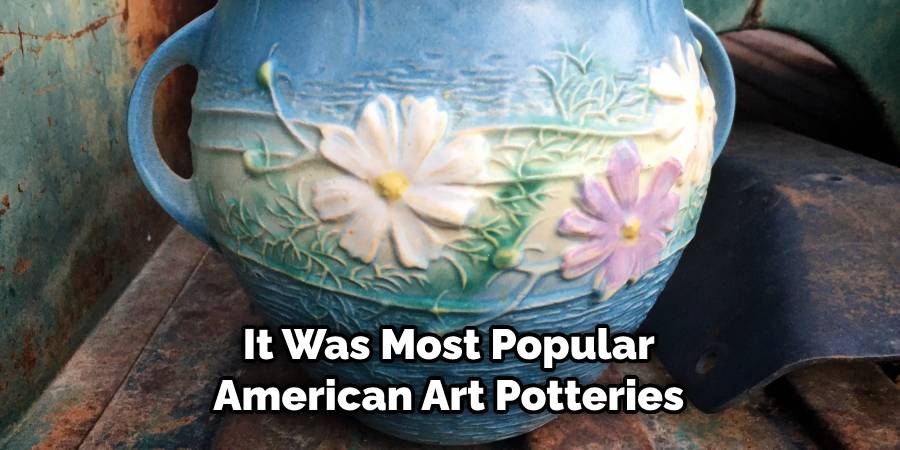
8 Methods How to Identify Roseville Pottery
1. Look for the Roseville Name.
One of the easiest ways to identify Roseville pottery is to look for the name “Roseville” on the piece. The name was typically impressed into the clay, so it should be fairly easy to spot. If you don’t see the name, check around the underside of the piece for an incised or impressed mark. This can be a letter, number combination, script lettering including the name or a variation of “Roseville.”
2. Examine the Piece for a Signature.
In addition to the name “Roseville,” many pieces of Roseville pottery also feature a signature. The signature can usually be found on the bottom of the piece and may take the form of a word, initials, or symbol. Generally, Roseville pottery was signed by the designer who created the piece.
The signature can help you identify more information about a particular item—such as the name of the artist who created it and the year it was made. If you’re looking for a piece of Roseville pottery and it has a signature, this is a good sign that you’ve found an authentic item.
3. Look for a Date Code.
Another way to identify Roseville pottery is to look for a date code. The date code can help you determine when a piece was made. The date codes will either be on the bottom of the pottery or stamped into it. The date codes on Roseville pieces typically consist of two numbers, such as “15” or “18.” These numbers correspond to the specific year in which the piece was made.
For example, a date code of “15” would indicate that the piece was made in 1915. On certain pieces, there may be additional numbers that indicate the month and day in which the piece was made.
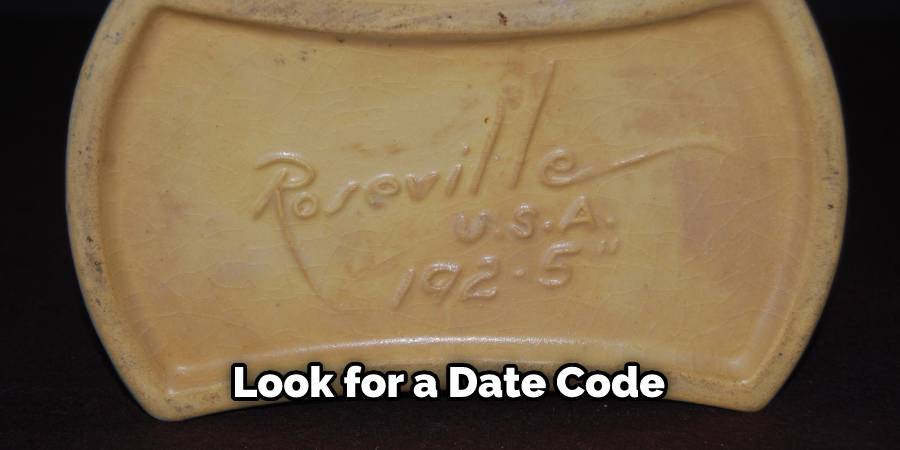
4. Check for an Unknown Mark.
If you come across a piece of Roseville pottery with an unknown mark, it’s possible that it was produced by another company that used similar marks. To confirm that the piece is indeed from Roseville, you can check for other identifying characteristics, such as the name or signature mentioned above.
If the piece still looks like it could be from Roseville, then you may want to contact an expert or appraiser for a final determination.
5. Compare It to Known Examples.
If you’re still not sure whether a piece is from Roseville, you can compare it to known examples from the company. There are many online databases that feature images of Roseville pottery, which can be helpful in making a positive identification.
You can also take your piece to a local antique shop or an appraiser for help in identifying it. While these strategies may require additional investments of time and money, they can give you a more definitive answer regarding the origin of the piece.
6. Consider its Age.
The age of a piece of pottery can also be helpful in determining its origins. Roseville was in business for over 50 years, so if you know approximately when the piece was made, it will be easier to narrow down your search. You can also look up the age of a piece of Roseville pottery by consulting price guides or experts in the field.
With this information, you can easily distinguish Roseville pottery from other brands. Though the age of a piece can be helpful, it’s important to note that this isn’t always the most reliable way to identify it.
7. Determine its Value.
Once you’ve determined that a piece is from Roseville, you can begin to research its value. There are many factors that affect value, such as age, condition, rarity, and demand. It’s important to do your research and consult an expert if you’re looking to buy or sell a piece of Roseville pottery.
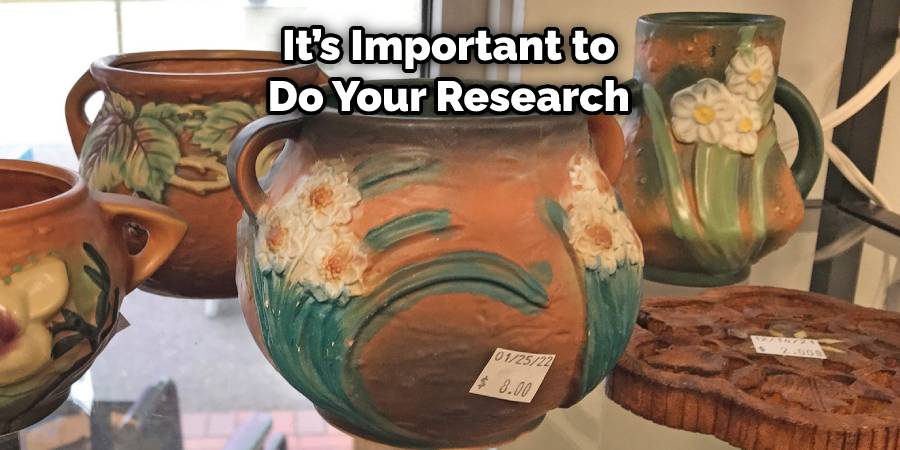
Additionally, by taking into account the age, condition, and rarity of a piece, you can also get a good sense of its worth. Popular resources for determining value are auction websites or forums dedicated to Roseville pottery. Additionally, museums may be able to provide insight into the value of particular pieces.
8. Enjoy Your Collection!
Now that you’ve identified and valued your Roseville Pottery pieces, it’s time to enjoy them! If you’re a collector, you can proudly display your pieces as part of your collection. Or, if you’re looking to sell, use what you’ve learned to ensure that potential buyers are aware of the true value of your pieces. With the right knowledge, you’ll be able to confidently identify Roseville Pottery and enjoy it for years to come.
In conclusion, identifying Roseville Pottery is a matter of paying attention to detail and doing some research. Knowing what factors to look for, such as the name “Roseville” or a signature, can help you determine whether a piece is genuine. Additionally, consulting an expert can give you a more accurate assessment of the value of the piece. With these tips in mind, you’ll be able to properly identify and appreciate any pieces of Roseville pottery that come your way!
Things to Consider When it Comes to Identifying Roseville Pottery:
1. Pattern:
The patterns on Roseville pottery are unique and often very detailed. Many of them feature naturalistic elements such as animals and plants. Look for the distinctive designs, which are often hand-painted on the pieces.
2. Color:
Roseville pottery is known for its vibrant colors, such as blues, greens, and yellows. Some of the later pieces also feature a matte finish in black or gray tones.
3. Shape:
The Roseville pieces often have a distinct shape, such as an oval or square. Look for the distinctive shapes to help determine if it is Roseville pottery.
4. Glaze:
The glaze used on Roseville pottery is one of its most identifying features. Look for a glossy finish that adds shine and depth to the piece.
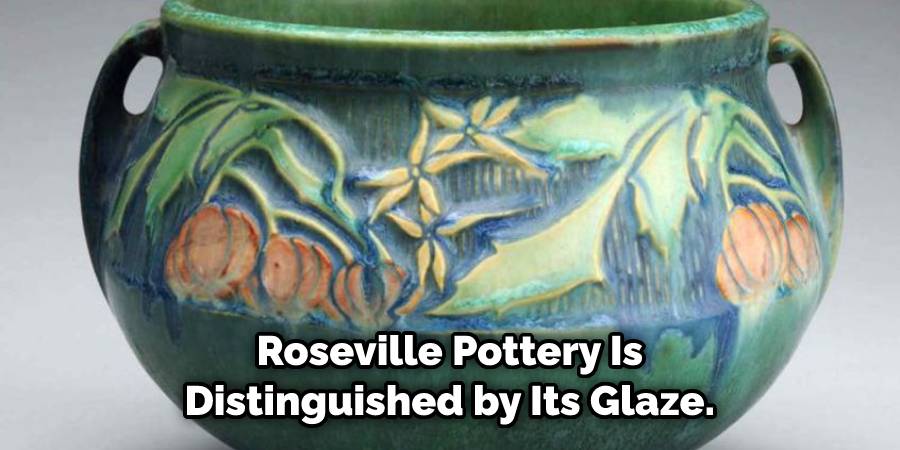
5. Markings:
Many Roseville pieces are marked with a distinct logo or other types of hallmark. Be sure to look for these markers on the bottom or backside of the piece as a way to verify its authenticity.
What Is the Most Valuable Piece of Roseville Pottery?
The most valuable pieces of Roseville pottery are those that are rare and in demand, as well as those with a signature or design from an artist who is particularly revered. One example is the “Double Rose” vase designed by Carl Schmidt in 1911 for Roseville Pottery. This piece has been highly sought after for many years and is one of the most valuable pieces of Roseville pottery.
Other highly sought-after pieces include those designed in the mid-1930s by Anne Crites, such as her Bushberry line. Her designs are often considered to be some of the best examples of art deco pottery from this era. Additionally, early pieces that feature a Roseville Pottery logo or signature are particularly desirable and carry significant value.
Conclusion:
With a bit of knowledge and a few resources, you can easily identify Roseville pottery. Keep in mind that even if the piece is not authentic, it may still be valuable or of sentimental value. Remember to take into account the style, color, glaze, texture, shape, and handle of the pieces to make sure you detect any anomalies.
There is something special about owning a piece of history that dates back centuries ago; using the information provided can help you uncover something really special! Thanks for reading, and we hope this has given you some inspiration on how to identify Roseville pottery!


